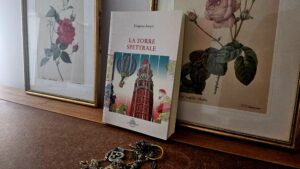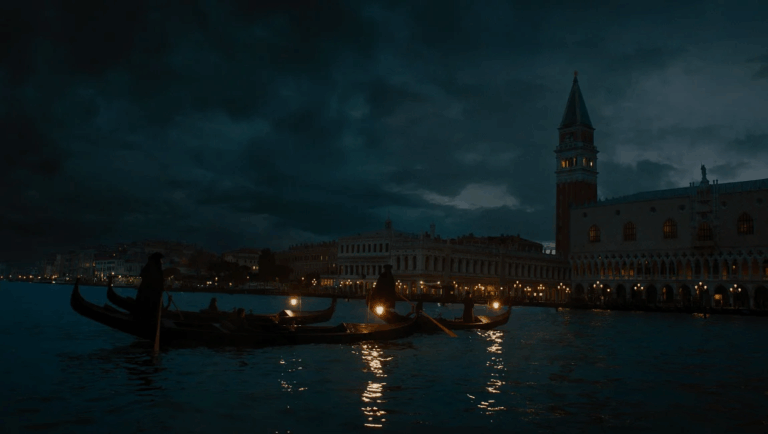What can you do when all you want to do is paint and you have the full support of your family but society would never accept it? The Caccia family knew the answer: you take the vows and found your own artistic school, disguising it as a monastery. Let’s take a dive into XV Century art history and explore the life and works of Orsola Maddalena, born Theodora Caccia, one of the most prolific painters of her time.
The post came out yesterday in early access on my Patreon.
Orsola Maddalena Caccia
Moncalvo (Asti), 1596 – Moncalvo (Asti), 1676
Theodora came from a family of artists: her father was possibly the most famous painter, Moncalvo was a duchy under Mantua and it was ruled by Vincenzo I Gonzaga and Eleonora de’ Medici. Her father worked with Federico Zuccari at the Carlo Emanuele I Gallery in Turin, and in Milan with artists in the retinue of Federico Borromeo, and Orsola’s mother also came from a family of artists, so it’s safe to assume she supported her daughters Orsola and Francesca in their pursuit of an artistic career. During their lifetime, the two sisters were called “the Fontanas of Monferrato“, with reference to Lavinia and Artemisia Fontana.
Theodora started studying at home, and a composition painted in her youth is a testimony to her fondness for Raphael.
She soon started working with her father, replacing him on several commissions, but the spectre of marriage eventually started looming on her life and her sisters, and they all choose the monastery: in 1620 Theodora took vows with the Ursuline sisters in Bianzé, she choose the name Orsola Maddalena and kept painting, alongside producing incredible illuminated initials. Her two sisters followed though we don’t know whether they worked together.
Five years later, their wealthy father pulled off a bold move: he financed the founding of a new monastery within his own residence, a place more akin to a painting atelier, where his daughters could keep painting and be safe. Orsola was nominated abbess of this unusual retirement place, and the sisters could inherit all of their father’s wealth when he died later the same year. She will remain in this position till 1652 and gave us several maternal scenes with the Virgin and Sant’Anna.
With her altarpieces, she’s one of the most prolific artists of the modern age, but she also painted lots of works destined for private places and a delicate selection of still-lifes.
Amongst her favourite subjects, the depiction of the contemporary mystic Osanna Andreasi from Mantua, who followed in the footsteps of Catherine from Siena and took her vows to flee an arranged marriage. Orsola dedicated her a vibrant painting in 1648, titled The Mystic Marriage of Osanna Andreasi and currently preserved in Mantua.
There’s a subtle element of resistance in the choice of this topic, and the same delicate expression of self can be seen in other portraits of contemporary female saints. My favourite painting of hers of course has to be a more visionary one: an extraordinary Saint Marguerite of Antiochia with the dragon that often gets overlooked in favour of more traditional subjects and compositions.
The same subject is also present in another less violent painting, in which the Saint is simply shunning the dragon’s temptation and prefers to look at the Cross.
Regardless of the ascetic subjects and her monastic condition, we mustn’t think of Orsola as a shy painter recusing the temptations of mundane life: she sought affirmation as an artist in the European courts and established rich relationships with both the Gonzagas, particularly Bishop Scipione Agnelli, and with the Savoias. Her letters to Christine of France, born Princess and longly regent of the Savoia duchy, are a testament to her cleverness and ambition.
Within her own monastery, other women sought shelter in other to pursue the artistic career, most notably Angiola Maria and Laura Bottero who took their vows and were named Angelica and Candida Virginia.
Orsola’s sister Francesca died in 1628 when she was in her 20s, and she could be a good choice when writing about characters who fell through the cracks of history.













1 Comment
Pingback:Plautilla Nelli, the abbess who tried to teach us collaboration – Shelidon
Posted at 10:18h, 08 September[…] being a woman, that is. Some painters had the luxury of founding their own version of a monastery, as we saw for Orsola Maddalena Caccia. In contrast, others didn’t give a flying fuck and lived according to their own rules, like […]